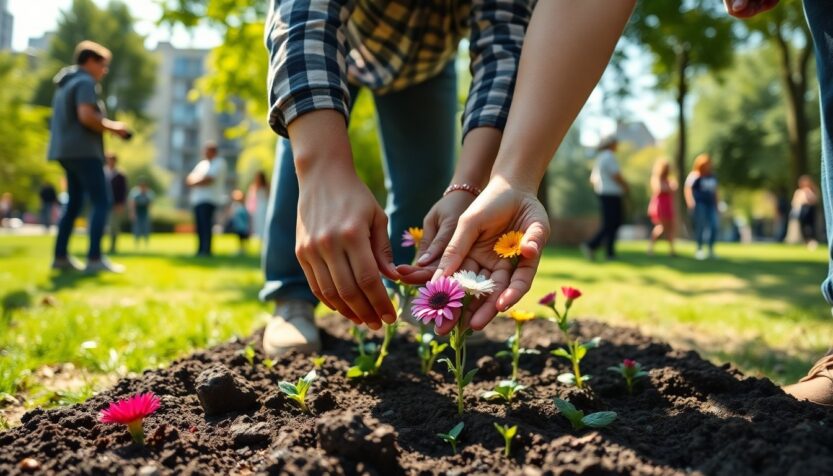The pursuit of friendship is often filled with uncertainty, much like waiting for a rare celestial event. While we may hope for connections to blossom effortlessly, the reality is that forging lasting relationships often requires a delicate balance of timing, shared experiences, and mutual interests.
Building the foundation of friendships
Throughout our lives, we accumulate friendships in layers, similar to how a structure is built brick by brick. When I reflect on my inner circle, I notice that many of my longest-lasting friendships date back many years. Some began in the hallways of high school, while others trace back to my childhood days. For instance, a friend I met as a toddler lived just down the street, and we remained close thanks to our mothers’ friendship and shared beliefs. Another bond formed during a ski trip in ninth grade, and yet another blossomed during university, where we later collaborated within the local art scene.
The role of shared experiences
It’s interesting to observe that friendships often spring from overlapping circumstances. My more recent friendships, cultivated over the past decade, reflect a similar pattern; we share not only age and location but also a lifestyle characterized by our lives as expatriates on a secluded island. This common ground seems critical for the initial spark of connection.
The delicate nature of new friendships
Even when the factors of shared circumstances, interests, and timing align perfectly, forming a friendship is never guaranteed. You can’t just declare, “This person will become my best friend.” Instead, friendships evolve organically over time, much like a garden requiring careful nurturing to sprout and flourish.
Initially, these new connections can feel fragile. I often find myself describing acquaintances I’ve met in the past year as friends, even though I recognize that our bonds are still in the infancy stage. It’s essential to treat these relationships with a gentle touch, providing enough attention to keep them alive without overwhelming them with excessive enthusiasm, which can sometimes be off-putting.
The transactional phase of friendship
During the early stages, friendships may feel somewhat transactional. This isn’t inherently negative; it’s simply human nature. Both parties are likely assessing whether the relationship merits their time and emotional investment. A recent encounter at my booth illustrated this perfectly. I met a woman who recognized my t-shirt from Provincetown, a place close to my heart. Our conversation flowed effortlessly as we exchanged stories about travel and our experiences as expatriates. However, the future of that interaction remains uncertain.
Navigating modern challenges in forming friendships
In today’s fast-paced world, making new friends feels more challenging than ever. Distractions abound, with many individuals immersed in digital media or caught up in the whirlwind of their busy lives. This overwhelming pace can lead to a lack of opportunity for genuine connections. Moreover, some people erect emotional barriers after experiencing disappointments in past friendships, making it even tougher to forge new ones.
However, don’t despair—there are still ways to cultivate new friendships, even in this complicated landscape. Here are some strategies to consider:
Embrace openness
While it may seem simple, being open to new connections involves allowing yourself to be vulnerable. Smile at strangers, initiate conversations, and don’t shy away from small talk, even if it feels awkward. Remember, every friendship begins with a moment of openness.
Seek commonalities
Identifying shared interests can serve as a solid foundation for budding friendships. While age, location, and shared experiences are classic touchpoints, consider humor or hobbies as potential connectors. Finding at least three common threads can help plant the seed for a stronger relationship.
Participate in community activities
Engaging in shared passions is another excellent way to meet new people. Whether you enjoy gardening, hiking, or creative writing, seek out local or online groups dedicated to those interests. Attend workshops or volunteer opportunities; even if a best friend doesn’t emerge, you’ll expand your social circle.
Communities often host various activities through centers or volunteer organizations. Don’t hesitate to reach out and inquire about events that might interest you. Express your desire to connect with others—most are eager to facilitate introductions.
The journey of friendship
It’s crucial to recognize that building friendships later in life takes time, patience, and resilience. It’s not merely about amassing names, but about nurturing authentic connections. Each interaction is a step toward growth, with some relationships flourishing while others fade away. Regardless, they contribute to our understanding of ourselves and the world around us.
Think of friendship as a garden; you plant seeds, nurture what you can, and accept that not every plant will thrive. Yet, when one does, the beauty of that connection is truly rewarding. Continue to show up, smile, and nurture those budding friendships—you never know which ones will bloom in unexpected ways.

